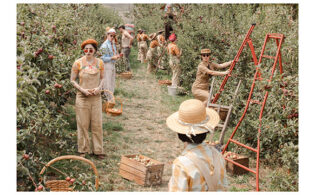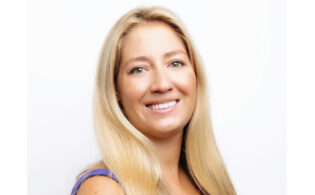With offices in Munich, London and Los Angeles, Red Arrow Studios International has positioned itself as a preeminent supplier of scripted, factual and entertainment formats to the global market. Under the leadership of Bo Stehmeier as president, the business continues to tap into its network of 20 sister production companies under the Red Arrow Studios banner—a group that includes Fabrik Entertainment, the producers of Amazon’s Bosch, and CPL Productions, creator of the acclaimed Old People’s Home for 4 Year Olds—as well as third-party outlets, as it carves a niche for itself as an “über-connector” in the global content market.
WS: How is Red Arrow Studios International responding to the changes in the distribution industry?
STEHMEIER: There is no doubt that the role distribution is playing in the TV ecosystem is changing rapidly. And I think it’s fair to say that, these days, to thrive as a distributor you need to be agile, versatile and creative, and you also need to be an über-connector. So spotting shifts in the industry is important. As the FAANGs matured, and we saw how their business models were changing and how they were positioning themselves, it became clear that original content was going to be key. So we have had a lot of success working with these companies early on: Bosch was Amazon’s first-ever drama commission, and Lilyhammerwas the first series Netflix put out as original content.
But as well as identifying changes, it’s also knowing when not to throw the baby out with the bathwater! We sell across all windows, from linear to SVOD, and the rise of the FAANGs hasn’t meant that traditional distribution to linear broadcasters is dead by any means. In some ways, as the linear channels step up to compete, we are seeing more activity than ever before.
Another big shift is that we are now involved in IP throughout its whole lifecycle, not just at the end when the show is delivered. We are getting involved in projects earlier and earlier—at the treatment and development stage—especially in scripted.
If you are a distributor of scale, it has never been more important to be able to put together complex rights structures, build business models and financial packages to help facilitate ideas, wherever they are created, and then come up with bespoke distribution strategies to make sure each IP generates maximum revenue back to our production partners. It’s all about how you connect the dots. That’s where I see the true renaissance of the distribution business.
WS: Red Arrow Studios International has its roots in SevenOne International, which was set up primarily to sell ProSiebenSat.1’s original productions. How has the relationship with your parent broadcast group evolved?
STEHMEIER: Wherever an organization is created, you always carry that DNA within you, but nearly ten years on we have grown to become a truly international business, with multiple production companies around the world. Being part of a huge broadcaster in Europe is incredibly beneficial, as it provides not only resources for investment but also audience intelligence. And of course, it continues to provide us with product, too. Our pipeline of German TV movies and series from SAT.1 sells widely, particularly in the key European markets, and complements and rounds out our full catalog of more English-language shows.
WS: What’s your approach to crafting rollout strategies on titles?
STEHMEIER: As a distributor, we ideally like to recoup within the first window, so there is sufficient upside for the production company we are representing. But the strategy—and recoupment—really depends on the type of show, the genre, the budget and how it has been financed; be that via the traditional broadcaster commissioning model, or by tapping into a local fund or private equity. When an opportunity arises, you look at it and determine how you service that specific project in a bespoke way.
WS: Is the Red Arrow Studios International catalog heavily skewed towards drama or is it a fairly even split between scripted and non-scripted?
STEHMEIER: I would say it’s 60 percent scripted, 40 percent non-scripted, but it depends on how you measure that—by revenue or frequency of trade. But overall turnover-wise, it’s 60/40.
WS: Are broadcasters still eager to take all rights, or are they willing to be more flexible to save some money?
STEHMEIER: There is definitely more flexibility, and traditional broadcasters are keen to get in on big shows early as they don’t want to miss out on a hit. In Europe in particular, with quotas coming in, the streamers are increasingly co-producing with local partners.
In those territories where the big players are on basic pay, or the SVODs have a very aggressive penetration in TV households, then the free-to-air players tend to be much more protective because they have to be. But generally, if a production is loud enough, any business model applies.
WS: There is a lot of competition for talent. What can Red Arrow Studios International offer third-party producers that they may not be able to find elsewhere?
STEHMEIER: Aside from finance—be that development money, advances or minimum guarantees—it comes back to being über-connected. Our diverse catalog means we have strong relationships with broadcasters in all the major territories, linear and nonlinear, and through that we have a huge amount of market knowledge and expertise that we impart back. We are also well resourced across development, creative, acquisitions, sales and marketing, so that we can offer a partner maximum support.
WS: What impact will the streamers’ six-figure talent deals have on the broader content ecosystem?
STEHMEIER: So far, with a few exceptions such as The Grand Tour, it has primarily impacted the scripted business, where the bar has been raised, not only in terms of quality and value on-screen but also budgets.
You need to have deep pockets to compete in that market, and you need to be prepared to invest at the development stage to secure the right projects and talent. We’ve done a number of early development deals recently, including a long-term deal with the award-winning Israeli writing and producing partners Amit Cohen and Ron Leshem to develop multiple premium drama projects together, and you’ll see us announce more of these kinds of deals in the coming months.
But this strategy isn’t only driven by the fact that we want to compete with the FAANGs. It’s also because the other large linear platforms in Europe and North America are in that game as well. They expect you to come to a meeting with early development stage projects because that’s where the business is going.
WS: What are your thoughts on the studio-backed direct-to-consumer platforms like Disney+, which have international ambitions? Will their content holdbacks end up creating more opportunities for European companies like Red Arrow?
STEHMEIER: Many of these propositions rolling out will be nonlinear, pay services; in response, the linear free-TV services are moving more towards live, hyper-regional content to differentiate themselves—and so are looking for local talent and more local productions. This is an opportunity for us, especially for our formats business. Over the last few months, we’ve seen a big increase in demand for our scripted formats in particular.
WS: Do you have concerns about the volume of content out there?
STEHMEIER: The breadth of content out there is huge, and it is hard to see this as anything but positive. We continue to see a spike in revenues, particularly when it comes to scripted remakes and also our social experiment formats like Old People’s Home for 4 Year Olds, because they enable broadcasters to cut through the clutter.
In the world of commissioning, it’s important to have executives who will take a chance on something a bit different. It’s OK to have volume, but there is always an appetite among viewers for truly original, creative content.
WS: What are your big-picture priorities for the year ahead?
STEHMEIER: Sell, sell, sell, of course, but aside from that, we have a number of core objectives.
We are going to continue investing and co-producing in high-end dramas like Vienna Blood, Departure and Death and Nightingalesat the earliest possible stage, a strategy that is being driven by Carlo Dusi, our executive VP of commercial strategy for scripted, and his team.
Alongside that, we need to ensure we maintain our diverse catalog by continuing to grow our acquisitions pipeline. Alex Fraser, our senior VP of acquisitions, is continuously acquiring a range of product, from high-end scripted to procedural dramas and TV movies, high-volume factual entertainment to blue-chip factual series, and of course standout format opportunities.
We also want to ensure we continue benefiting from the growing appetite for non-English-language drama and scripted formats, such as Lice Mother, Einstein and Stella Blómkvist, in addition to continuing to drive forward our big format brands, such as Married at First Sight and The Last Cop.
And last but not least, we need to ensure we are always delivering value back to our production partners, in-house and third-party, and staying 100 percent relevant for their businesses.





